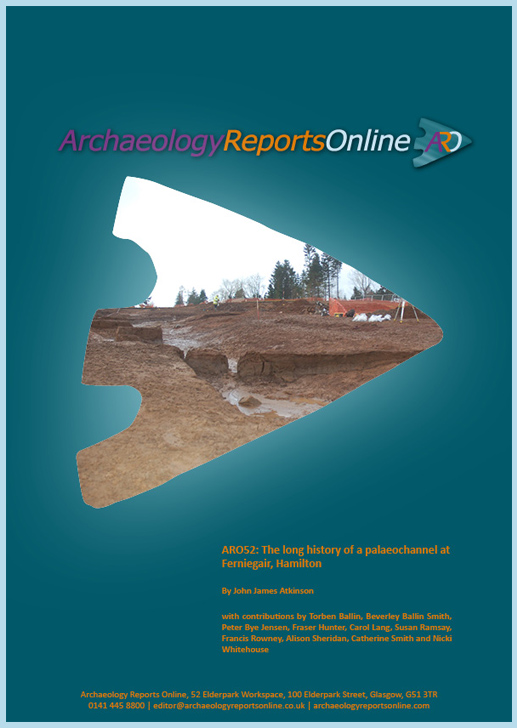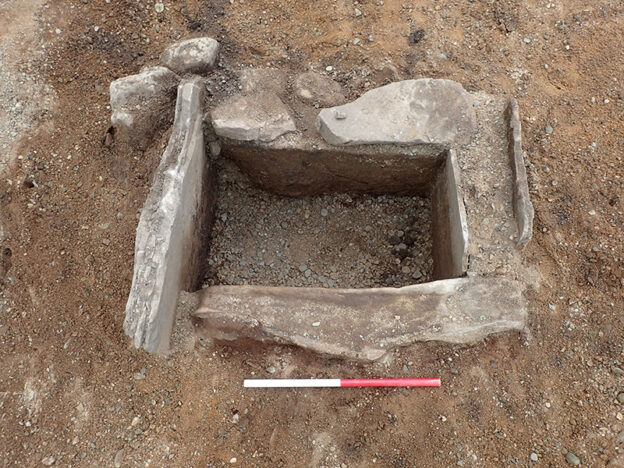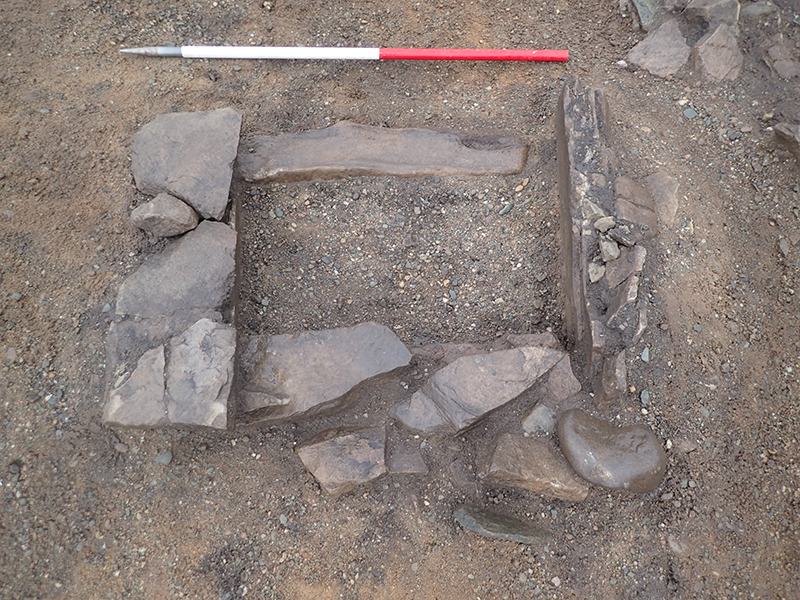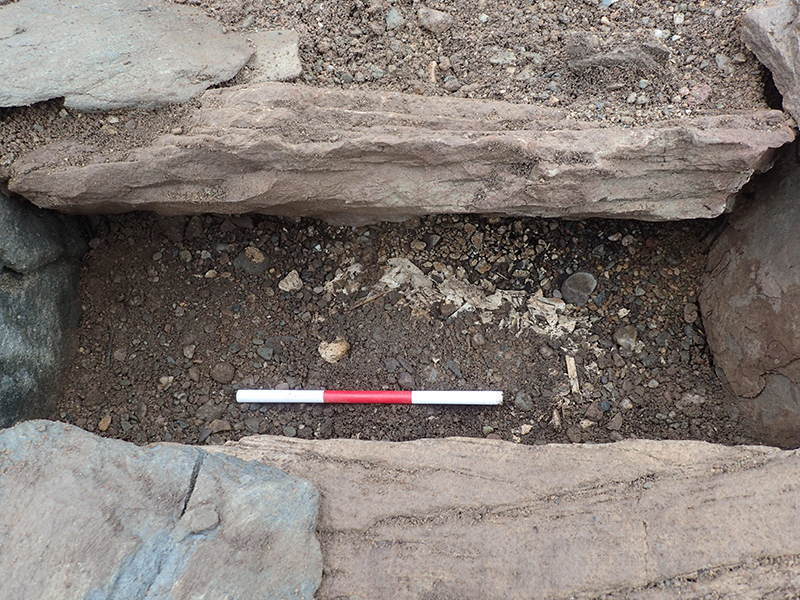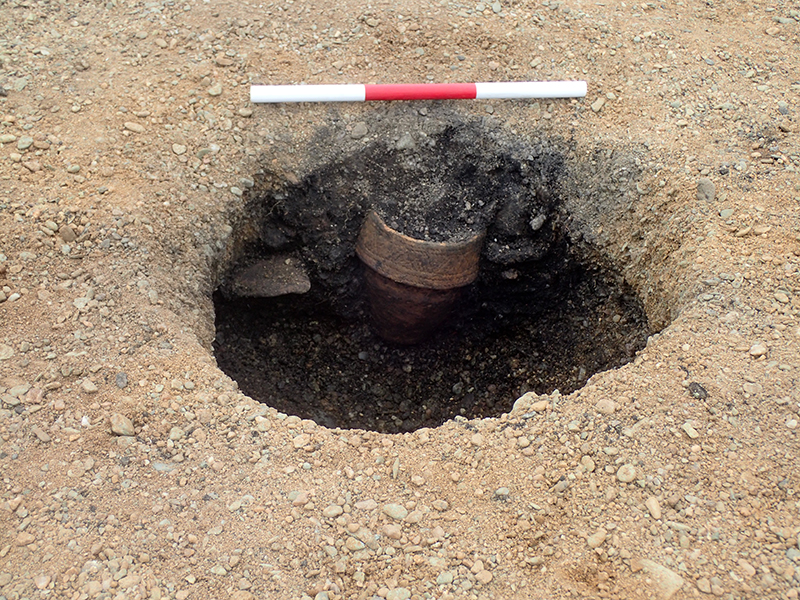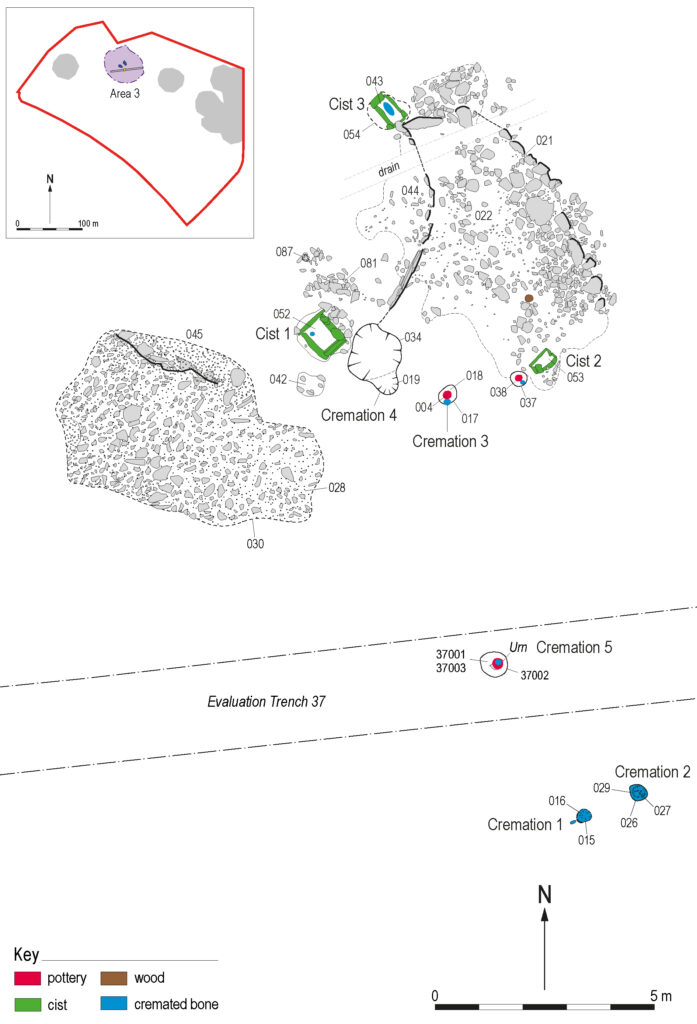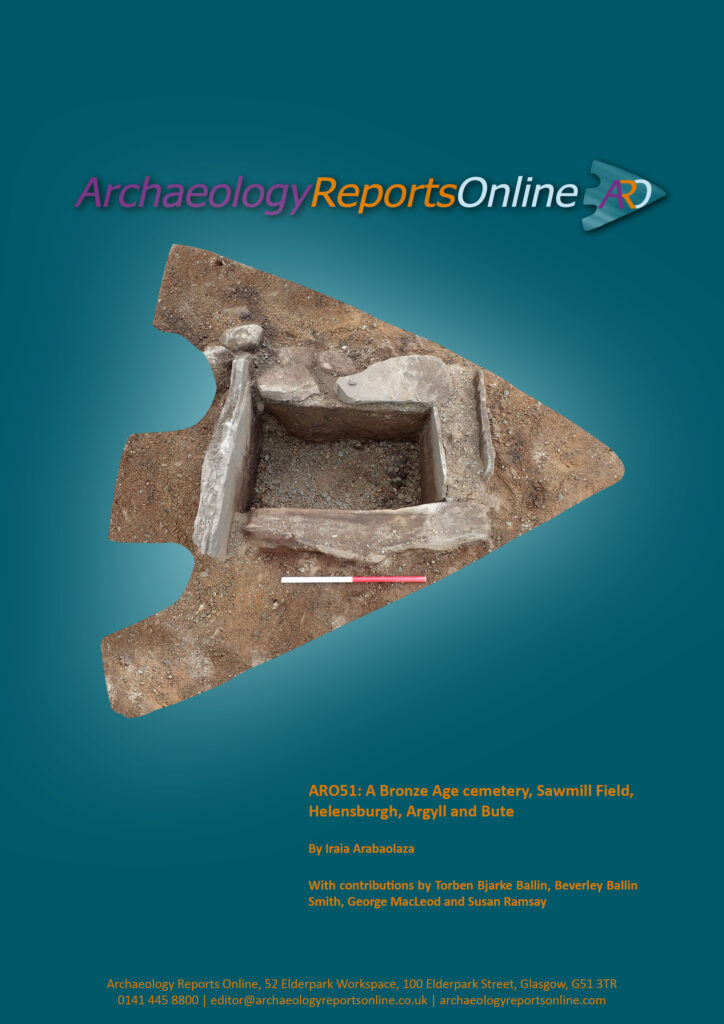Archaeological artefacts found by GUARD Archaeologists in a palaeochannel at Ferniegair near Hamilton revealed its use as a refuse dump for adjacent Neolithic and Bronze Age settlement.

In the beginning the palaeochannel was an open channel of water, a small burn. Archaeobotanical and pollen analyses indicated mixed woodland close by, making the dryer sandy banks of this burn attractive to early prehistoric people.
The earliest use of the north-western bank of the palaeochannel was a small group of features and artefacts radiocarbon dated to the early Neolithic period. Later, a horseshoe-shaped structure with a single entrance and a deposit of domestic debris was in use from the end of the 35th century BC to the middle of the 34th century BC – the middle Neolithic. Its occupation deposit contained flint microblades as well as pottery and pitchstone. A later and more extensive, mixed deposit that covered the structure was associated with numerous stakeholes, probably from windbreaks, and was dated to the early/middle Bronze Age.
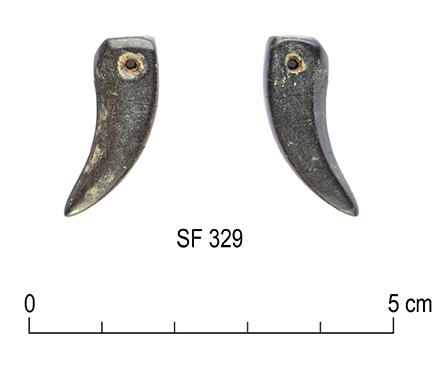
One of the most interesting and unusual finds in the lower fill of the palaeochannel was an exotic jet pendant shaped like a claw or possibly a bird’s head, whose material is from Whitby in North Yorkshire. Although difficult to date, it was probably lost in the early Bronze Age.
Over this time not only did the burn gradually fill in with debris, but the environment around it changed too, and by the end the burn no longer functioned as an open channel of water.
This seemingly ordinary camp site area took on an unexpected importance with the occurrence of exotic objects like the jet pendant. In the use of the palaeochannel, successive groups of prehistoric people inadvertently created a reservoir of archaeological finds that have allowed us a glimpse of how they interacted with each other and with their environment across time.
The archaeological work was funded by Robertson Homes and was required as a condition of planning consent by South Lanarkshire Council who are advised on archaeological matters by the West of Scotland Archaeology Service, who considered there to be a potential for hitherto unknown archaeology to be buried at the site.
ARO52: The long history of a palaeochannel at Ferniegair, Hamilton by John James Atkinson is freely available to download from Archaeology Reports Online.
